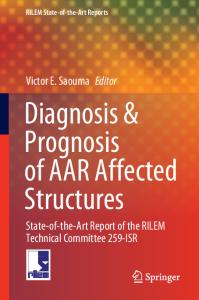Nanoindentation Round Robin on Thin Film Copper on Silicon
- PDF / 274,834 Bytes
- 7 Pages / 594 x 792 pts Page_size
- 47 Downloads / 354 Views
Nanoindentation Round Robin on Thin Film Copper on Silicon DAVID T. READ, ROBERT R. KELLER, N. BARBOSA, and R. GEISS Nanoindentation is used in a variety of fields to measure material hardness and elastic modulus. This test technique is especially attractive for thin films because of the difficulty of conducting tensile or other conventional mechanical characterization tests on thin film specimens, and because it requires only a small surface area for testing. However, the standardization process for this new measurement method is still in progress. To test the ability of current measurement procedures to provide comparable results, a round robin was conducted. Invitations to participate were sent to over 100 laboratories. Two specimens, a copper film on a silicon substrate and an uncoated substrate, were distributed to each of 33 laboratories. The choice of measurement procedure was left to the performing organizations. By the end of the reporting period, 27 sets of results were received. While the average reported uncertainty (1 standard deviation) among the individual participants was 4 pct of the average hardness, the interlaboratory standard deviation of the hardness values was 15 pct. Similarly, the average reported uncertainty of the modulus was 5 pct of the average value, but the interlaboratory standard deviation of the modulus was 19 pct. None of the measurement variables examined in this round robin, including instrument type, analysis procedure, time since instrument calibration, chip mounting procedure, and tip condition, and neither of the potential covariant effects, chip location in the wafer and test date, were found to have a statistically significant effect on the reported hardness or modulus. I. INTRODUCTION
NANOINDENTATION was recently proposed as a test technique for measurement of hardness and indentation modulus of all types of solid materials.[1,2] Nanoindentation is attractive because it is a convenient, understandable test that provides a quantitative result. The over 2600 citations of Reference 1 attest to the attractiveness of this test method. Nanoindentation has been extended to studies of additional properties, in particular, to film-substrate adhesion[3] and to residual stress.[4] The advantages of the method for thin films were recognized immediately.[5] Foremost among these is the ability of this technique to characterize a thin film mechanically without creating a particular specimen geometry and freeing the specimen from the substrate, as needed for microtensile testing. The small surface area, only a fraction of a square millimeter, damaged by the test is also a significant advantage. Standardization of this technique is still in progress.[6–13] Tsui and Pharr[14] recognized the problem of measuring the property of the film, rather than some average property of the film and substrate, and addressed it by limiting the penetration of the indenter tip to a fraction of the thickness of the film. Thin film materials are technologically important materials today. Metal and dielectric films on silic
Data Loading...


